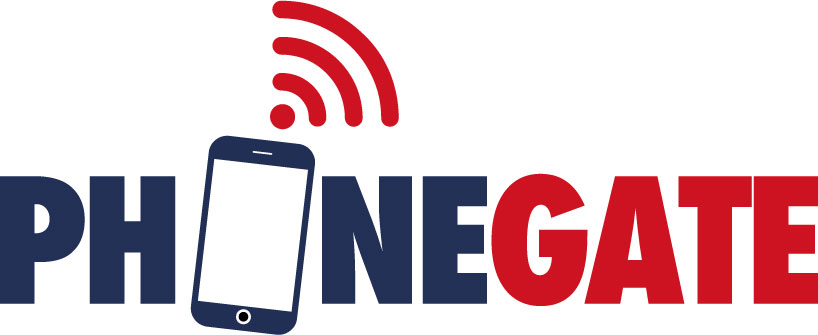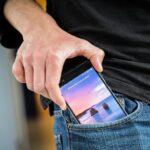In France, more than 500 mobile phone models are put on the market every year*. During the same period, only about 60, on average, are controlled by the French National Frequencies Agency (ANFR). 85% of smartphones therefore escape any control over the real level of exposure of users to radiofrequencies. Much more worrisome, in all other countries of the European Union, as well as in Switzerland and the United Kingdom, 100% of mobile phones escape all control. Although informed, the European Commission is proving to be totally failing to protect the health of hundreds of millions of users. Such regulatory laxity towards the mobile phone manufacturers and distributors must stop!
Under pressure, ANFR obliged to act
Before we issued the alert in July 2016, and legally obliged ANFR to publish all its test reports in March 2018, no mobile phone had ever been subject to any administrative sanction.
Since then, in two years, thanks to our action, 23 different smartphone models controlled by ANFR have been found to have SAR levels for the head and body above the regulatory limit of 2 W/kg during ANFR inspections. Four have been withdrawn from the French market. The others have only had their SAR level “updated” (reduced by updating).
The first withdrawal from the market dates back to April 2018, with the 100,000 Hapi 30 phones marketed by Orange, followed by the Neffos X1 TP902 (May 2018), the Echo Horizon Lite (Oct 2019), and the announcement on 20 May of the withdrawal of the Razer Phone 2 devices.
This top-of-the-line smartphone, sold in 2018, priced between 800 and 900 euros, has been marketed worldwide by the California firm Razer. During controls, its SAR trunk level reached 3.29 W/kg (nearly double the legal limit), the measurement having been carried out in an approved laboratory at 5 mm from the skin.
SAR levels much higher with real use
However, tests conducted by both ANFR and the journalist Sam Roe for the Chicago Tribune have shown that the local body SAR level is multiplied by a factor of 3 to 4 when measured either at direct skin contact or at 2mm. That of the Razer Phone 2 could reach over 10 W/kg at direct contact with the skin.
Since a first report in July 2016, the French Agency for Food, Environmental and Occupational Health & Safety (ANSES) has urged the Government to change the regulations concerning the SAR measurements to protect the health of users and in particular children. ANSES reaffirmed this in a report published in October 2019 entitled “Mobile phones worn close to the body and health”:
“the Agency recommends that measures be taken to ensure that users are no longer exposed to SARs exceeding 2 W/kg from telephones certified under the R&TTE Directive (those placed on the market until 13 June 2016 or even until 12 June 2017). To this end, the Agency considers that measures taken by manufacturers similar to those taken for the telephones placed on the market after 13 June 2016 and found to be non-compliant following the ANFR tests in 2017 would enable this objective to be achieved: software updates, telephone recalls, etc.”
At the end of October 2019, the French Government announced a series of measures, including a round table with industry:
«…that they commit themselves voluntarily to updating the software of their models put on the market before the application of the recent standards, which are more restrictive in terms of emissions. ».
And among the indispensable measures it proposes:
“France will ask the European Commission to strengthen the requirements applicable to new mobile phones placed on the market. As recommended by ANSES, the Government will request that the certification tests be carried out in contact with the device, and not at 5 mm as is currently the case, so that they are more representative of the real exposure of users.”
Millions of harmful mobile phones still on the market
In spite of the mobilization of several national associations, our public appeals and our meeting at the beginning of January at the Ministry of Economy and Finance, nothing has changed. Hundreds of models of mobile phones presenting health risks for users continue to be authorized on the French and European markets.
And there can be no question of the public authorities trying to find in the ongoing Covid-19 epidemic a justification for their inaction. Indeed, the mobilization underway to enable the industry to launch the development of 5G has not escaped anyone’s notice. The first mobile phones using this technology are currently being marketed.
Even more alarming internationally, the Federal Communications Commission (FCC), in its new recommendations published in December, continues to authorize manufacturers to measure the SARs of mobile phones up to 15 mm from the skin. The United States control agency has decided, without any justification, to disregard the scientific opinions of ANSES and the California Department of Public Health, for example.
The European Commission silenced by the mobile telephony lobbies
The situation is even worse at European level. No controls, no withdrawals or updates, including for the 23 models pinned in France. Thierry Breton’s answer for the European Commission in January 2020, following the intervention of Eurodeputy Michèle Rivasi, shows, according to Dr. Marc Arazi, President of Phonegate Alert:
“that the representative of the European Commission is hiding behind a staggering technocratic cynicism. His non-reaction shows the extent to which the mobile telephony industry lobbies have knowingly silenced the European authorities. We demand that this new health scandal, Phonegate, be treated with seriousness and a sense of responsibility. The health of hundreds of millions of Europeans citizen is at stake”.

![[Press release] Withdrawal of the Razer Phone 2: not seeing the forest for the trees!](https://phonegatealert.org/wp-content/uploads/2020/05/sortie-Razer-Phone-2-lancement.jpg)




